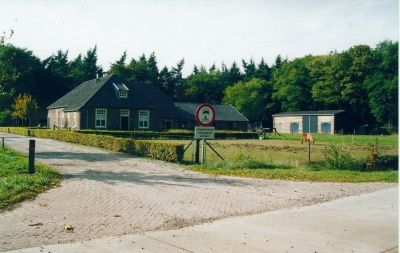Boerderij: De Sijp, Elsendorp
Contact
From this house, the reclamation of the De Sijp estate was regulated. Indeed, this estate was part of the grand plans to completely convert the empty swamp that still existed around 1900 to agriculture or forestry. Large landowners from all over the country and newly established engineering firms bent over the task.
In 1906, the forester's house De Sijp was built, today a National Monument. The building al…
From this house, the reclamation of the De Sijp estate was regulated. Indeed, this estate was part of the grand plans to completely convert the empty swamp that still existed around 1900 to agriculture or forestry. Large landowners from all over the country and newly established engineering firms bent over the task.
In 1906, the forester's house De Sijp was built, today a National Monument. The building also served as a horse and oxen stable. This house was occupied by a foreman of the Dutch Heath Society, Adrianus Smits, while he was clearing the heathland area known as De Sijp, of some 420 hectares in size. Horses and oxen pulled the ploughs that were part of the clearing process. The foremen also had a forester function, as the reclaimed land was often used for forestry. After Smits' departure, the building stood empty for several years and was then leased out as a farm with an extension of the stables and an annexed hay barn.
De Sijp was commissioned by the Nederlandse Heidemaatschappij, a kind of engineering company (today's Arcadis, founded in 1888)that aimed to reclaim wasteland such as heath and peel. The De Sijp estate was reclaimed in the early 20th century. A lot later than the nearby Cleefswit estate, and via a different method of reclamation that made De Sijp profitable. Similar reclamations were going on all over the wild lands of the Netherlands. Because of its remote location, poor roads (there were virtually no paved roads in 1900, and through the Peel itself there were virtually no unpaved paths) and swampy landscape, De Peel had previously only been turned into cultivated land in small bits and pieces. This changed around 1900. Hundreds of hectares at a time were made suitable for forestry. Because of the poor soil, it was thought that the Peel was only suitable for this. Artificial fertiliser was known but was not applied on a large scale until late in the reclamations. The workers of the Dutch Heath Society came from all over the country. The foreman's house De Sijp reflects that. Being a house for a foreman, it became large, as oxen and horses were used to plough the land, the house was given stables for these animals. It is a stool farm with an L-shape while in Gemert-Bakel long-gabled farms are mostly found. A long-gabled farmhouse is a rectangular building where all the doors are in one long side.
Source: S. Hoeymakers, Houtvesterij de Peel, 1986, Heemkundekring De Kommanderij, Gemert

